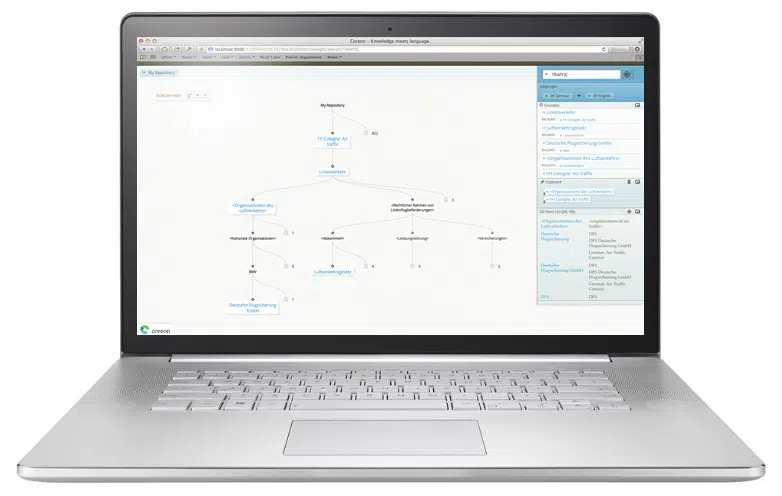Product
The Product
Coreon: Multilingual Knowledge System
With Coreon MKS you capture and model any kind of semantic asset – concept system, taxonomy, classification, nomenclature, thesaurus, ontology – together with multilingual terminology in one unified knowledge graph.
Equipped with a huge set of functionality for maintainers, for ad-hoc users as well as repository administrators, with Coreon you deploy a rich software system for demanding international organisations.

Visual Terminology
Semantic Asset Management
User Benefits Assessed:
| “Old school” Tools | Coreon MKS |
|---|---|
| “tunnel” view on one record | Craft concepts and terms in context |
| Scroll endless term lists | Explore a visual map |
| Type-in static hyperlinks | Build a knowledge graph |
| Loose control while resource is growing | Enhance the graph, secure your investment |
| Plug into a translation tool | Rely on API in any search deployment |
| Translate terms | Share knowledge about your products, services in any language |
| Export synonym lists | Boost search with semantic intelligence |
| Export terms | Enable multilingual AI with approved knowledge |
| Have a monolingual taxonomy tree | Share a semantic asset that is linguistically rich and multilingual |
| Work in overwhelming ontology editors | Enjoy a sleek and UX friendly browser application |